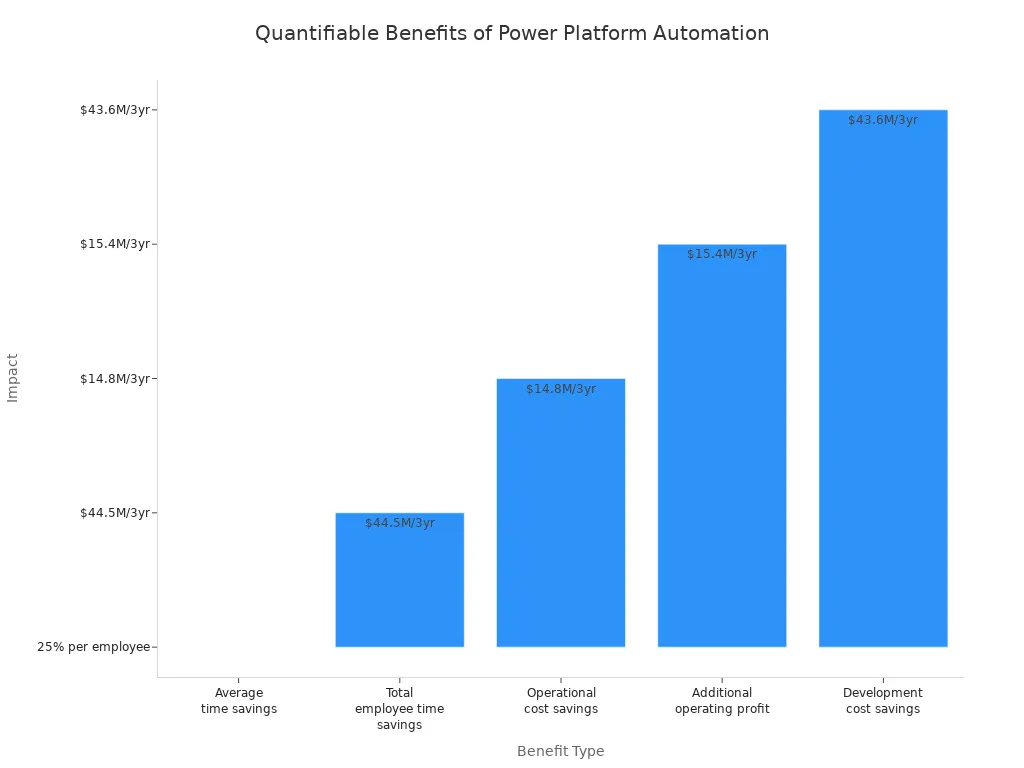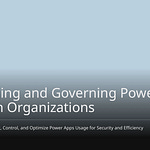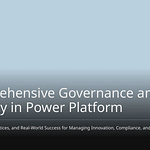Manual deployments often cause problems. You might see broken flows and hidden failures. This leads to wasting time on fixing issues instead of creating new ideas. These problems can annoy teams and slow down their work. Automating reliable CI/CD pipelines is a strong answer to these challenges. By using automated workflows, you can make your CI/CD pipelines more dependable. Azure DevOps plays a crucial role in this process. It helps improve quality and cuts down on mistakes. Teams can collaborate more effectively, which means faster deployment times. With Azure DevOps, you can automate testing and version control. This ensures consistency across different environments, allowing you to focus on new ideas instead of repeating the same tasks over and over.
Key Takeaways
Automating CI/CD pipelines cuts down on mistakes. This makes deployments more reliable and reduces broken flows.
Using Azure DevOps makes the development process easier. It helps teams work together better and deploy changes quickly.
Automation lets teams focus on new ideas instead of fixing deployment problems. This increases overall productivity.
Continuous testing and monitoring are very important. They help keep the quality of deployments high and find problems fast.
Begin with small automation tasks. Focus on key tasks like managing environment variables to slowly improve your deployment process.
The Pain of Manual Deployments
Manual deployments often cause big problems. You might find broken flows that mess up your work. Silent failures can happen without warning. This leaves you unaware until users notice issues. These problems come from many reasons, like setup differences between development and test environments. Such differences can break your pipelines and stop progress. Mistakes in workflow design, like logic errors or wrong trigger setups, often cause deployment problems too.
When you depend on manual processes, you waste time fixing these issues. Instead of working on new ideas and features, you end up stuck solving problems. This cycle of putting out fires can tire your team out. You might spend hours finding the cause of a failure, only to find a simple setup mistake caused it.
Think about how much time is wasted. Every minute spent fixing deployment issues is a minute not spent improving your apps or user experiences. Frustration grows as you see that manual deployments slow down your ability to deliver value quickly.
In a fast-moving world, being quick is very important. You need to change and respond to new needs fast. But manual deployments slow you down and create delays. By automating your CI/CD pipelines, you can get rid of these problems. Automation helps you focus on what really matters: creating new ideas and providing great solutions to your users.
Using automation changes your deployment process from a source of stress into a smooth, efficient workflow. You can get back your time and energy, leading to a more productive and creative future.
Why Automation Matters
Automation in CI/CD pipelines changes how you handle deployments. It offers many important benefits that can really improve your development process. Here are the main benefits:
Reliability: Automated processes lower the chances of mistakes. You can trust that your deployments will work correctly. This reliability means fewer broken flows and hidden failures.
Efficiency: Automation makes your deployment cycles faster. You can make changes more often, so you can meet user needs quicker. This efficiency lets your team focus on new ideas instead of fixing problems.
Confidence: With automation, you feel sure about your releases. You know your code has gone through careful testing before going live. This confidence reduces the worry that comes with manual deployments.
These benefits directly affect your business results. For example, companies that use CI/CD automation in Power Platform see clear improvements:
Deployment Frequency: You can put changes into production more often, showing a quicker delivery speed.
Lead Time: The time from code commit to deployment gets shorter, showing better efficiency.
Build Success Rate: A higher number of successful builds shows a more reliable CI/CD pipeline.
Rollback Rates: Fewer rollbacks mean more stability in your deployments.
Automation also helps teams work better together. It removes barriers between development and operations, improving teamwork. Teams can collaborate more effectively, creating a culture of ongoing improvement. Real-time log monitoring systems let you check application performance, solving deployment issues quickly.
“By showing the benefits—faster feedback cycles, fewer errors, and more efficiency—I helped change the team’s view, building a culture of ongoing improvement and teamwork.
Automating Reliable CI/CD Pipelines with Azure DevOps
Azure DevOps is a strong tool for automating reliable CI/CD pipelines. It has many services that make the development process easier. With Azure DevOps, you can manage your whole project from planning to deployment. This platform helps team members work together better and keeps everyone focused on project goals.
Key Features of Azure DevOps for CI/CD
Azure DevOps has many features that help with CI/CD for Power Platform solutions. Here’s a quick look:
These features work together to give developers a smooth experience. You can automate tasks that repeat, which lowers the chance of mistakes. This automation lets you focus on coding and giving value to your users.
Integration with Power Platform
Connecting Azure DevOps with Power Platform helps you manage deployments better. You can link Azure DevOps to your Power Platform environments. This lets you automate the deployment of apps, flows, and other parts. This connection makes sure your CI/CD processes are steady and trustworthy.
When you set up Azure DevOps with Power Platform, you can enjoy these benefits:
Streamlined Workflows: Automate the whole deployment process, from exporting solutions to importing them into other environments.
Version Control: Use Azure Repos to keep track of changes in your Power Platform solutions. This feature helps you manage updates and rollbacks easily.
Quality Assurance: Use Azure Test Plans to run automated tests on your solutions. This makes sure your apps work as they should before going live.
By using Azure DevOps, you can change your deployment process into a smooth operation. You will face fewer problems and get more predictable results. This change not only increases your team’s productivity but also improves the overall quality of your Power Platform solutions.
Key Components of Power Platform Pipelines
When you create CI/CD pipelines in Power Platform, some parts are very important for everything to work well. Knowing these parts helps you make sure your deployments are reliable and efficient.
Environment Variables and Connection References
Environment variables are like flexible placeholders in your pipelines. They let you change your solutions for different environments without needing to change the code. Connection references connect your apps to outside services, like databases or APIs. Managing these parts well is very important.
Here are some good ways to manage environment variables and connection references:
To make your deployment process even better, think about these tips:
Use a main solution to keep the single SharePoint connection reference and environment variables for common SharePoint sites and lists.
Keep solution-specific variables inside their own solution to avoid messiness.
Set up clear naming rules for environment variables.
Prepare for deployment by setting the right values for variables in each environment.
Following these best practices helps reduce maintenance work and makes deployments more reliable. You will also see better teamwork and improved management among team members.
Pipeline Variables and Secrets Management
Keeping secrets and credentials safe is very important in your CI/CD pipelines. Secrets management protects sensitive information like passwords and API keys. Organizations should use outside tools to store and manage secrets safely. This stops credential leaks and keeps your deployments secure.
Think about these strategies for good secrets management:
Use federated authentication for safe, token-based access without storing client secrets. This means setting up a trust relationship between Azure DevOps and an identity provider like Azure AD.
Regularly check and change secrets to lower risks.
By focusing on these key parts, you can build strong Power Platform pipelines that improve your deployment processes and keep everything secure.
Common Pitfalls in CI/CD Automation
When you set up CI/CD pipelines, you might face some problems that slow you down. Knowing these common mistakes can help you avoid them and make your deployment process better.
One big problem is using hard-coded values. Hard-coded values can cause issues when you move your solutions to different environments. If you forget to change these values, your code might not work right in production. Always use environment variables instead. This way, you can change your solutions without messing with the code.
Another mistake is not handling credentials properly. If you don’t keep your credentials safe, you could expose sensitive information. Use tools like Azure Key Vault to store secrets securely. This keeps your data safe and meets security rules.
Ignoring variable scoping and remapping can also lead to big risks. If you don’t scope your variables correctly, you might have problems with misrouted calls. This can cause silent failures that are hard to find. Always make sure your variables are scoped right for each environment. Also, remapping connections between environments is very important. If you don’t do this, your applications might break unexpectedly.
Here are some other common mistakes to look out for:
Skipping automated testing: This can lead to hidden bugs and issues.
Overcomplicating the pipeline: A complicated pipeline makes it hard to manage and fix problems.
Neglecting security checks: This can create weaknesses and possible data leaks.
Inconsistent environments: Code might work in development but fail in production.
No rollback plan: This can cause long downtimes during deployment problems.
Not monitoring the pipeline: Unnoticed failures can cause inefficiencies.
By knowing these pitfalls, you can make a better CI/CD process in your Power Platform projects. Avoiding these mistakes will help you create a reliable and secure automation pipeline.
Anatomy of a Reliable Pipeline
Making a reliable CI/CD pipeline has some important steps. First, you need to export your solutions. This is key for keeping track of different versions. Then, you import these solutions into your target environment. This step makes sure your apps are the same at all stages of development. After importing, you should do smoke testing. This quick test checks if the main functions of your app work as they should.
Here’s a simple list of the steps to follow:
Export Solutions: Use Power Platform pipelines to export your solutions easily.
Import Solutions: Set up automated deployment pipelines to cut down deployment time from weeks to minutes.
Smoke Testing: Regularly test solution imports in sandbox or QA environments before going live to catch problems early.
Keeping a clean and organized solution structure is very important. Group related parts together to avoid making versioning harder. This organization helps you manage your solutions better and lowers the chances of mistakes during deployment.
Another key part of a reliable pipeline is using modular, parameterized YAML. This method lets you break down complex tasks into reusable pieces. Here’s why this is helpful:
Maintainability: Modular design makes it easier to maintain and speeds up development cycles.
Automation: Using triggers and scheduled runs reduces manual work, ensuring steady and timely data flow.
Version Control: Keeping settings under version control with clear notes helps teamwork and makes it easy to reproduce.
By focusing on these steps and ideas, you can create a strong CI/CD pipeline that meets your current needs and grows with your projects. This organized approach will help you make your deployment process smoother and improve the overall quality of your Power Platform solutions.
Continuous Testing & Monitoring
Continuous testing and monitoring are very important for making your CI/CD pipelines successful. Smoke tests are quick checks to make sure your applications work after deployment. These tests quickly confirm that key features are working as they should. By using smoke tests, you can find big problems early, which helps avoid deploying broken applications.
Besides smoke tests, analytics tools give helpful information about your CI/CD processes. They help you spot slowdowns in performance and find out which commits caused them. This focused method lets you fix issues quickly. Here are some ways analytics can improve your CI/CD:
Identify Performance Issues: Watching job times and failure rates helps you stop pipeline problems.
Correlate Data: Connecting observability platforms with CI/CD metrics helps you link performance data to how the application behaves.
Real-Time Insights: Continuous monitoring gives you real-time updates on how healthy your applications are.
Feedback loops are key for making your CI/CD pipelines better. They let you learn from each deployment and make changes when needed. Here are some common feedback methods you can use:
Automated Testing: This helps you find bugs and problems early using different testing methods.
Continuous Monitoring: This gives real-time updates on how well the application is performing and its health.
Peer Review and Collaboration: This encourages sharing knowledge and improving skills through code reviews.
By focusing on continuous testing and monitoring, you can build a more reliable CI/CD pipeline. This method not only improves the quality of your deployments but also creates a culture of ongoing improvement in your team.
The Payoff of Automation
Using automation in your CI/CD pipelines has many great benefits. You can expect your releases to be steady and easy to grow. This means your deployments will be more trustworthy. You can count on your applications to work correctly every time. Automation cuts down on mistakes and makes processes easier. Because of this, you can finish tasks that used to take hours in just a few minutes. This speed lets you focus on important work instead of fixing problems.
Here are some clear impacts of automation:
You will also see a change in your team’s culture. Regular deployments become normal instead of rare. This change helps everyone work together better. Developers take on more responsibility for deployments, making the process more open. Teams create a strong governance system, which improves security and efficiency in deploying solutions.
“Platform engineering’s greatest potential lies not in its technical approach but in its cultural impact, fostering collaboration and treating developers as customers.”
As you start using automation, you help your team grow. They learn more about Power Platform governance. This knowledge gets them ready for future growth and new ideas. Overall, automation changes your deployment process into a smooth and efficient workflow. This allows you to consistently deliver value to your users.
In this blog, you learned how automating CI/CD pipelines in Power Platform can change your deployment process. You found out about the problems with manual deployments, like broken flows and lost time. Automation gives you reliability, efficiency, and confidence in your releases. By using Azure DevOps, you can make your workflows smoother and improve teamwork.
To start using automation, begin with small steps. Focus on important tasks like planning your environments and making environment variables. Slowly add automation to lower risks and improve your processes. Remember, even small changes can lead to big improvements in how well you deploy.
“Automation is not just a technical upgrade; it’s a cultural shift that empowers your team to innovate.”
Start using automation today to unlock the full potential of your Power Platform solutions.
FAQ
What is Azure DevOps?
Azure DevOps is a cloud platform with tools for making software. It helps you manage projects, automate CI/CD pipelines, and boost team productivity.
How does Azure DevOps integrate with Power Platform?
Azure DevOps works well with Power Platform. You can automate deployments, manage version control, and run tests. This ensures your applications are delivered reliably and efficiently.
What are the benefits of using CI/CD in DevOps?
Using CI/CD in DevOps improves reliability, efficiency, and confidence in your releases. It lets you deploy changes quickly and lowers the chance of errors during deployment.
How can I start automating my CI/CD pipelines?
Start by finding key tasks in your deployment process. Use Azure DevOps to automate these tasks step by step. Begin small, focusing on environment variables and connection references, then grow your automation efforts.
What are common mistakes to avoid in CI/CD automation?
Common mistakes include using hard-coded values, not managing credentials well, and skipping automated testing. Avoid these issues to keep your CI/CD process smooth and reliable.















